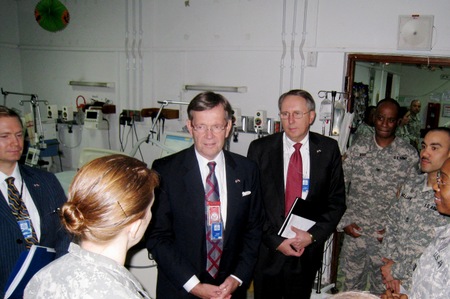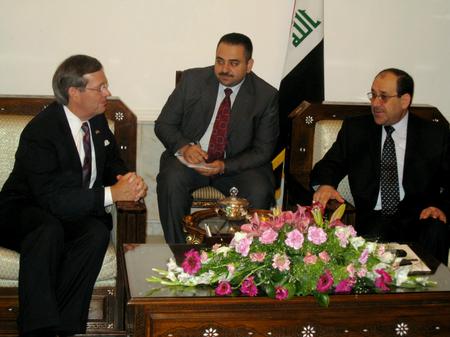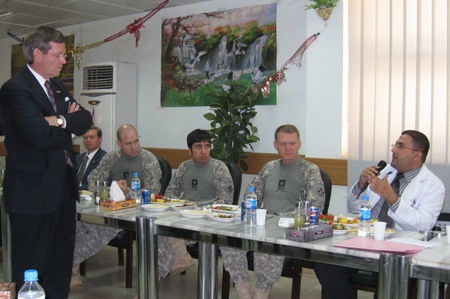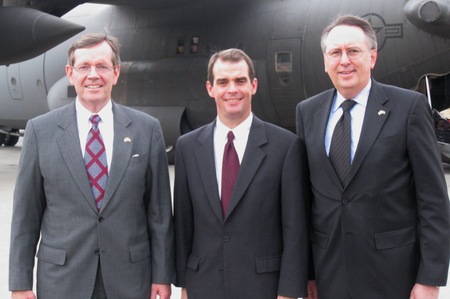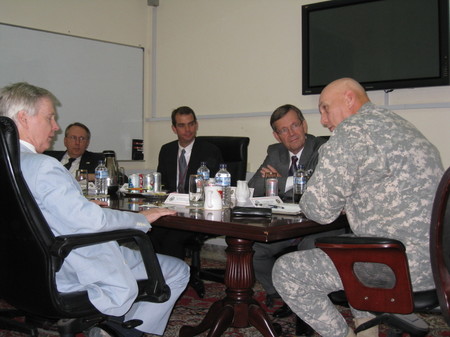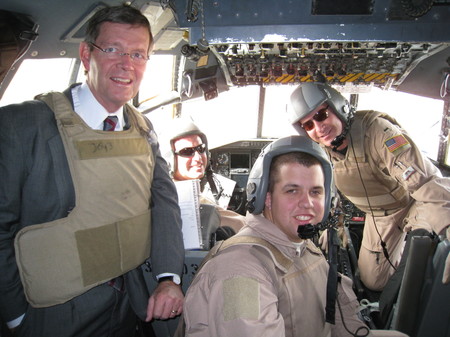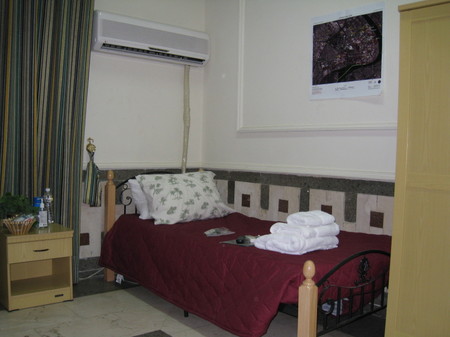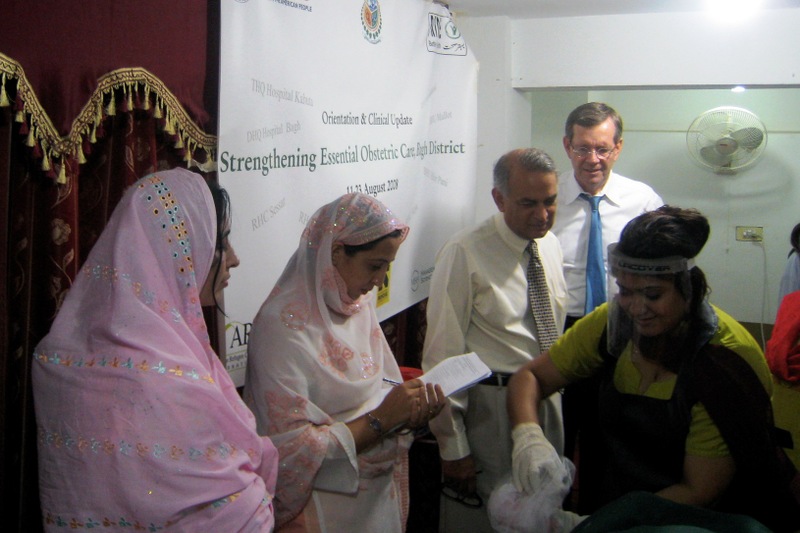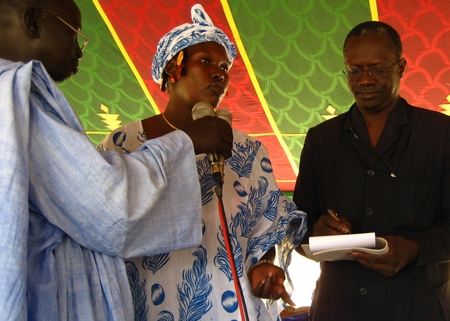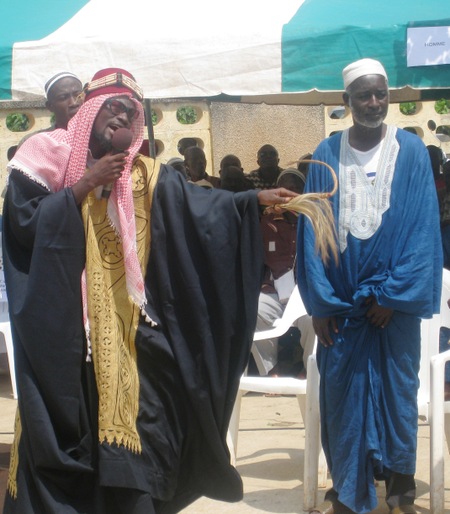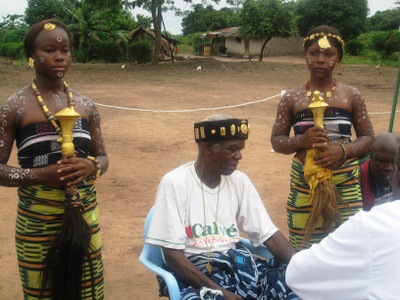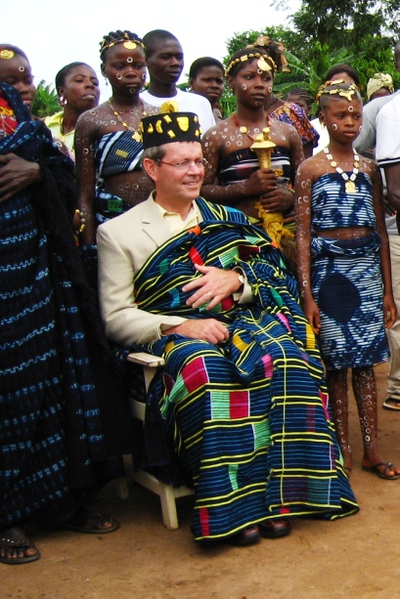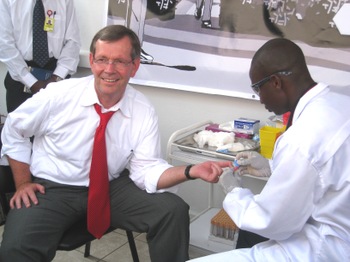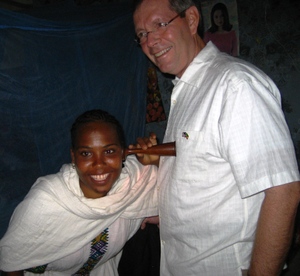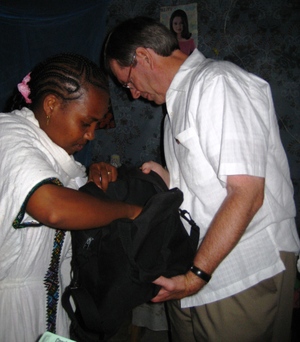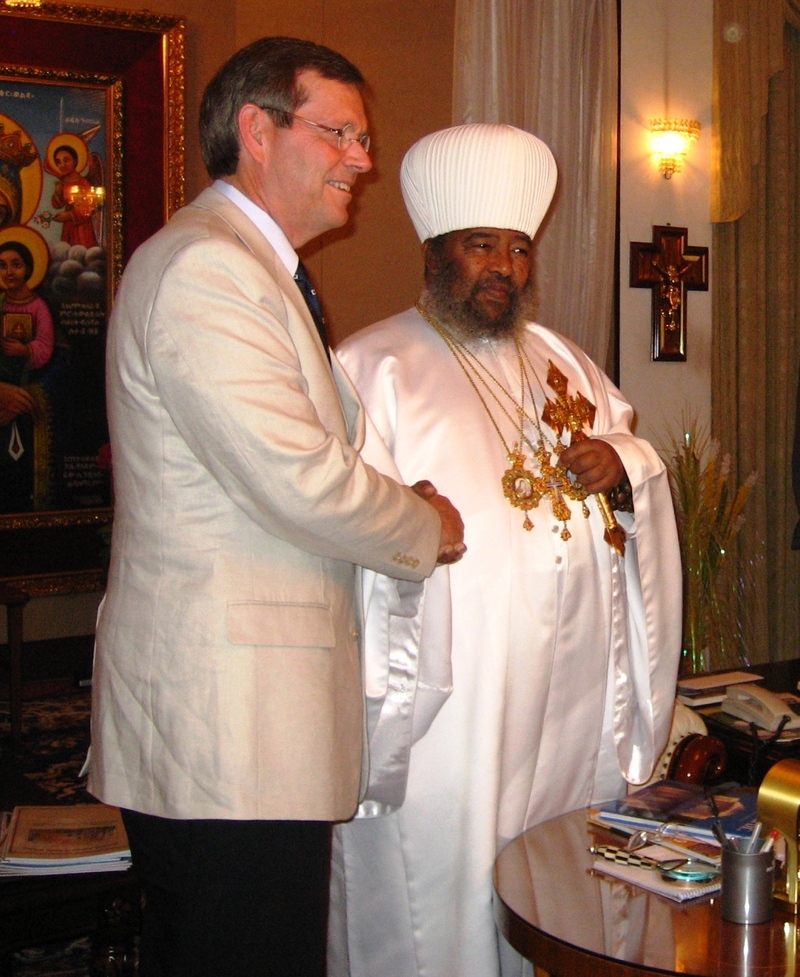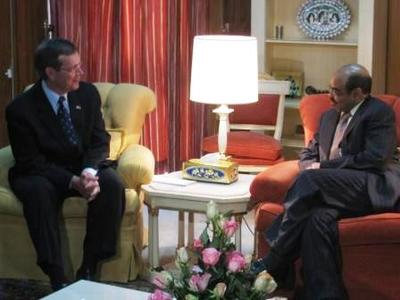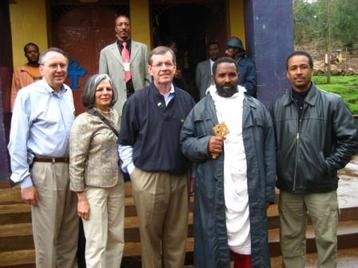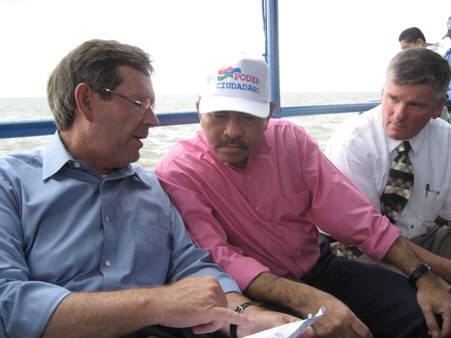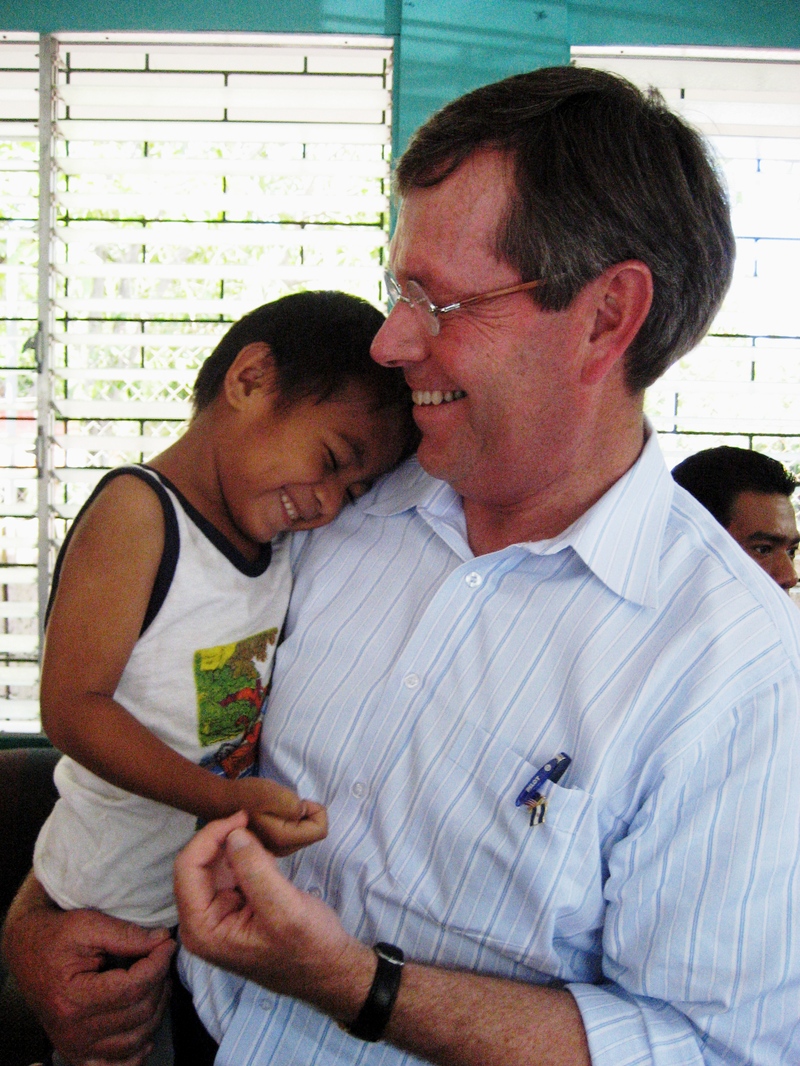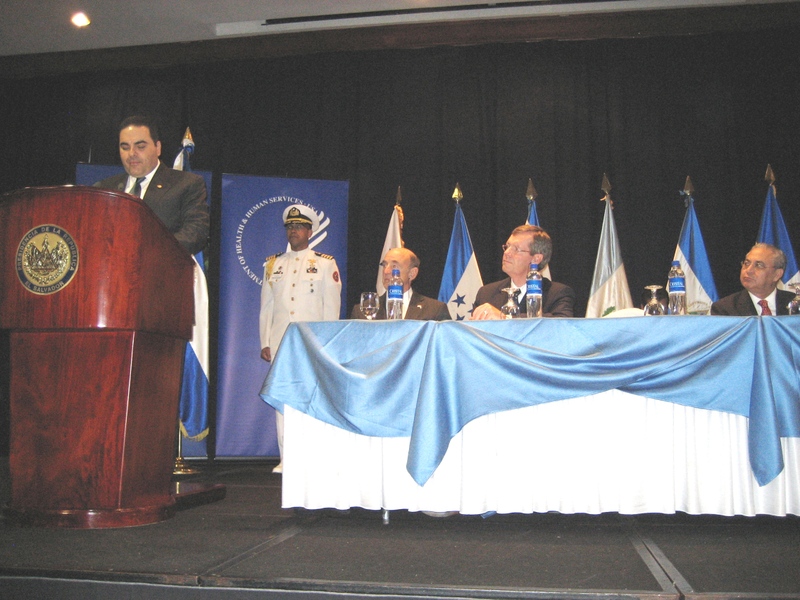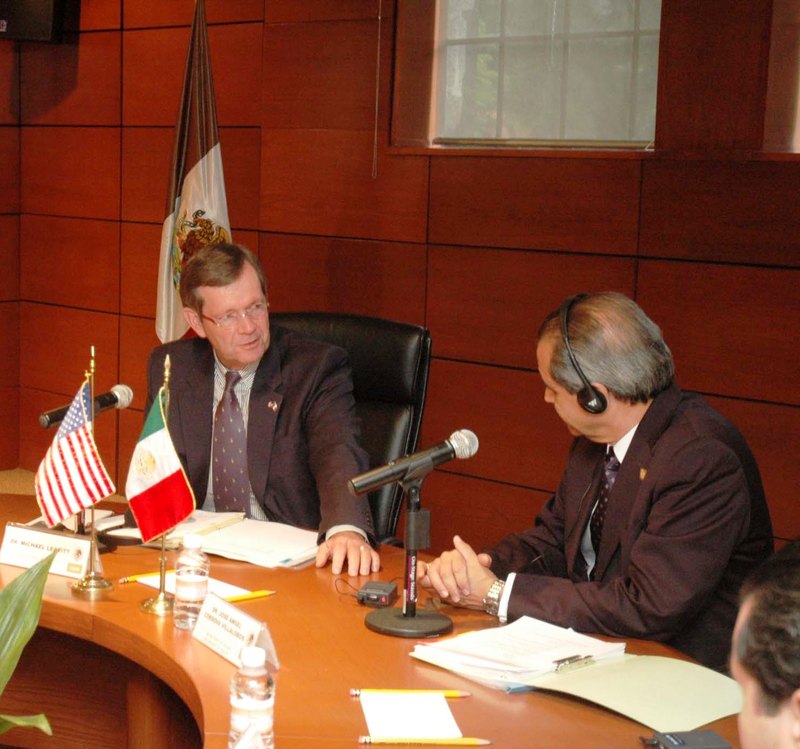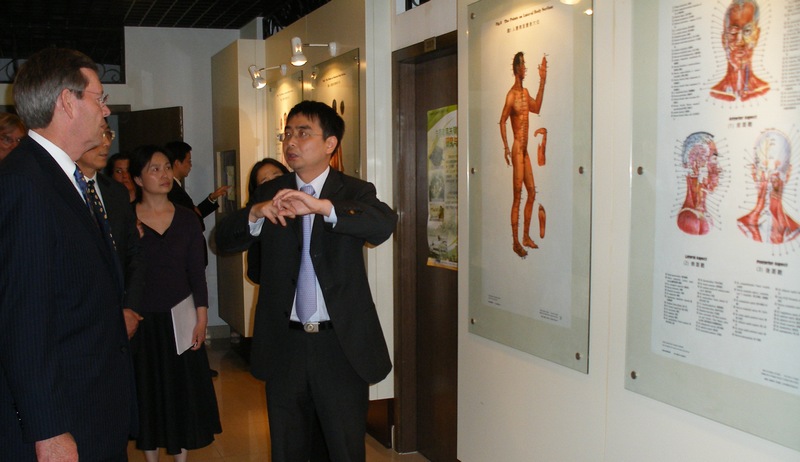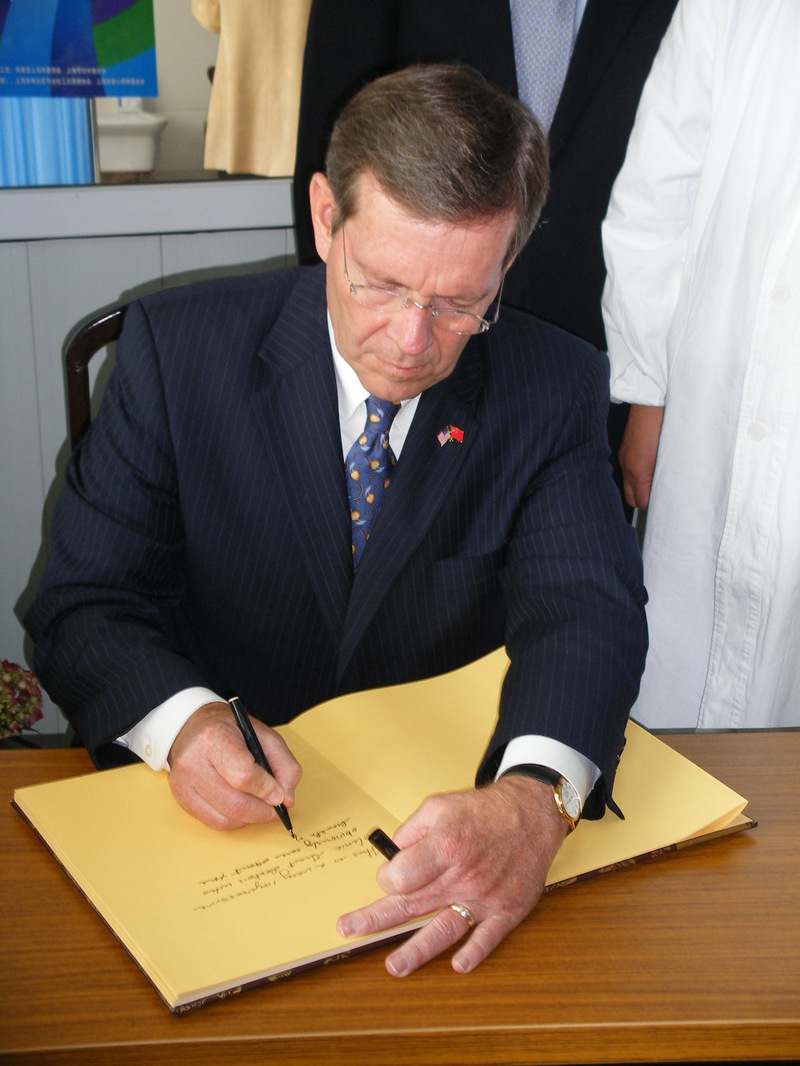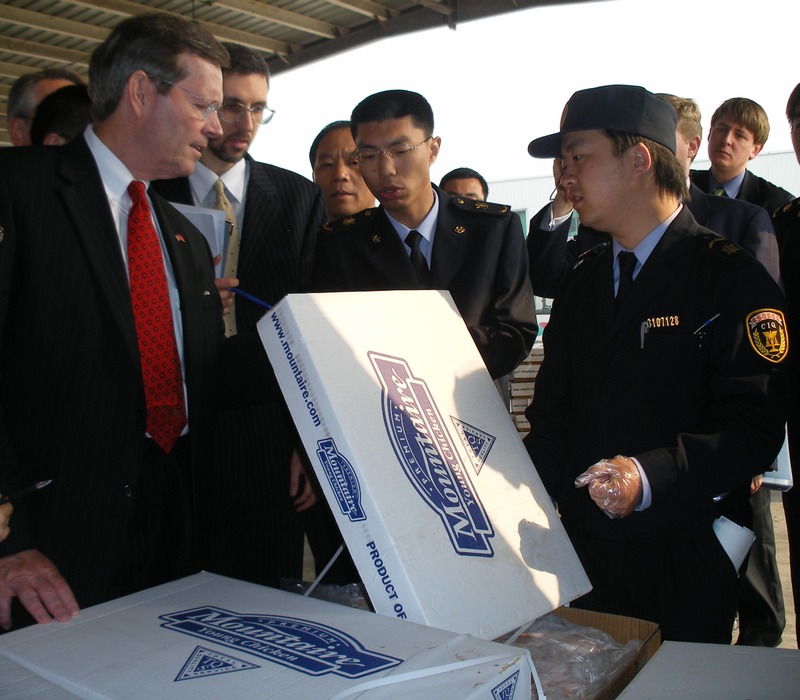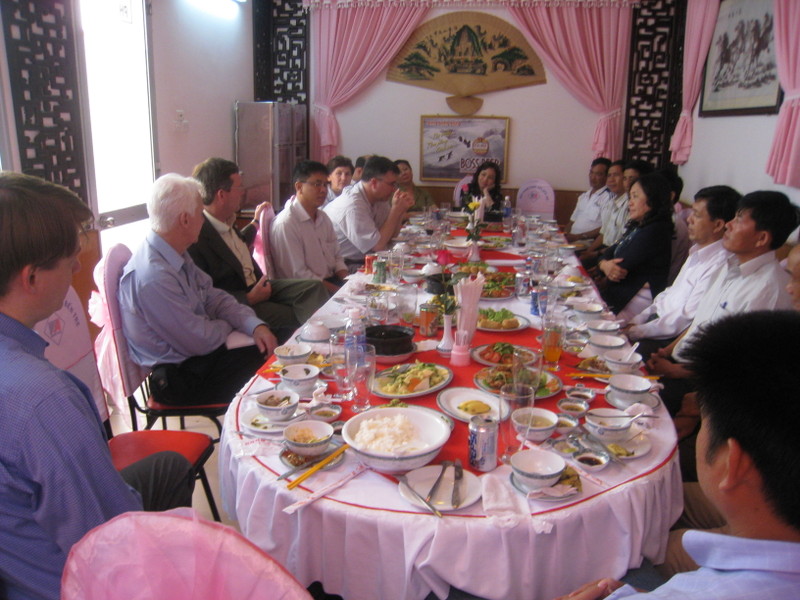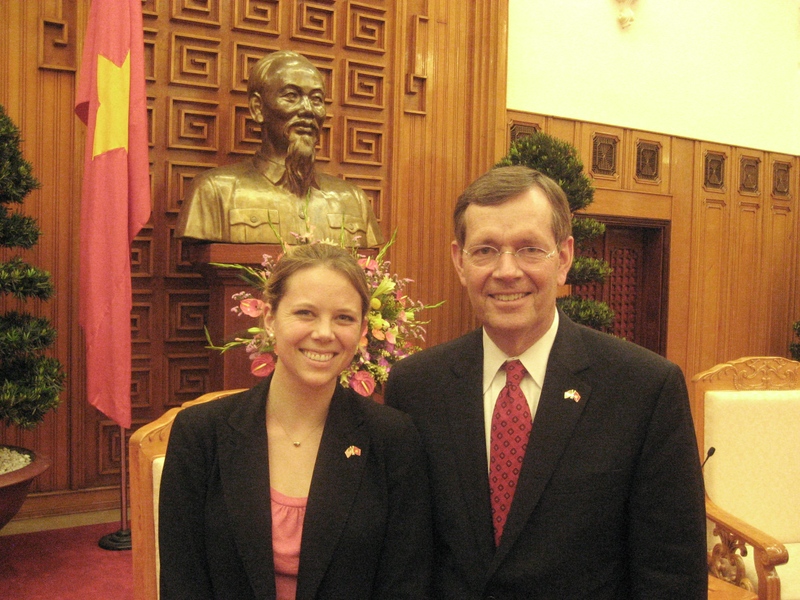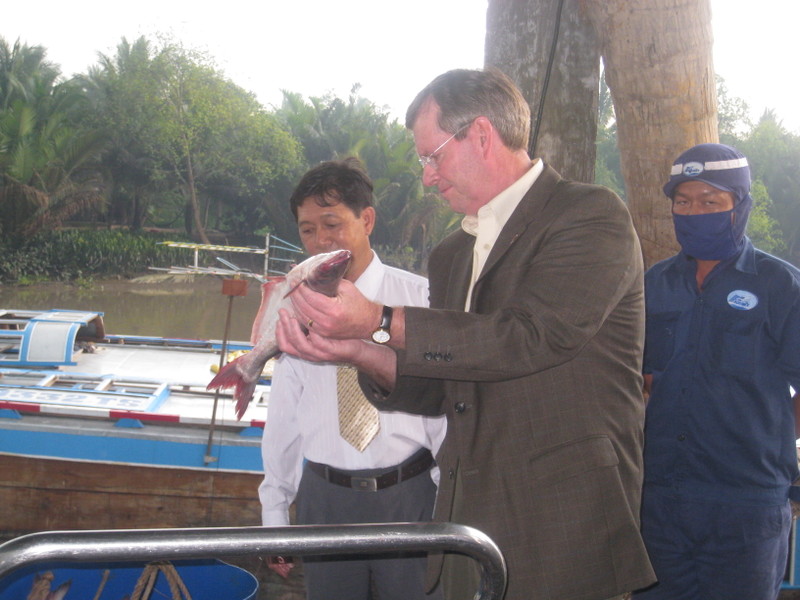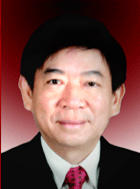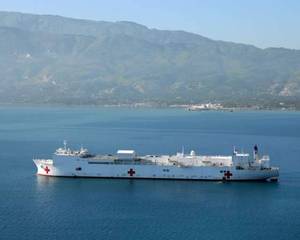This morning I'm driving to a clinic outside Johannesburg which is run by Sisters of Mercy, one of our NGO partners. They are affiliated with Catholic Charities. I'll tap out a few notes on my Blackberry as we drive and then see if I can pull them together into something coherent tonight.
I spent last night doing briefings on Hurricane Dean. At the conclusion, I determined it was appropriate to declare a Health Emergency just in anticipation. Our teams are in place and our assets ready to respond. We have a play book that scripts out our actions in circumstances like this. It has been developed from past experiences and exercises we routinely do as preparation.
It is winter in South Africa. Temperatures are pleasantly cool today.
Our delegation has now arrived: Ambassador Mark Dybul, the head of the President’s Emergency Plan for AIDS Response, Dr. Julie Gerberding of the CDC, Kent Hill from USAID, and several others.
I did several interviews yesterday to brief the regional media, concentrating mostly on building awareness of our U.S. government HIV/AIDS efforts. The United States invested nearly $600 million in South Africa alone this year. We deal directly with nearly 400 NGOs who deliver the care. Our goal is $30 billion over the next 5 years in 15 countries, of which 12 are in Africa.
The US needs to emphasize this kind of effort. I refer to it as health diplomacy. It is an incredible, generous, and aggressive initiative in my judgment, and something a nation as strong as ours ought to be doing.
Whenever a Cabinet Officer travels internationally, the U.S. embassy provides a country briefing: generally about two hours of intensive briefing on the economic, social, and political situation in the country. What a great education this is. As interesting as what is said are the people reporting it. I'm always interested in the Foreign Service people of the United States. Most of them spent the majority of their career outside the United States, rotating every three years. They become remarkably well informed by their experiences. This morning I am with Don Teitelbaum, the Deputy Chief of Mission. The ambassador is out of the country on an August break. Don has been with the State department 22 years and spent most of it in places like the Dominican Republic, Guyana, Kenya, Somalia, Sudan, Lebanon and Uganda. He is married to a UNICEF employee.
We're starting to see some terrain that looks like what I imagined South Africa to be. The freeway infrastructure in this part of South Africa is impressive. I'm sure it’s not all like this everywhere. We’re on a two lane divided highway.
Like so many other places I’ve visited, the division between economic classes is startling. There are two South Africas. I’m beginning to see now the evidence of the poor impoverished South Africa. The system of trash collection seems to be piling it up next to the street and then allowing goats to rummage through it.
There are signs of progress as well. Children in school uniforms walk everywhere. There are large light posts that have giant lights on top which cast a big footprint allowing them to light an entire section of the township with just one pole.
The landscape is barren and brown. No grass or other ground cover makes the garbage and clutter seem more evident. However, there are many yards where its evident people are trying to create a sense of order.
Construction of the homes is done with whatever materials are available. There is a lot of sheet metal and home-made bricks. It is evident there are no water or sewer arrangements.
As we proceeded, I began to learn the history of Winterveldt. When apartheid was practiced, the nation’s laws created segregation of whites and blacks. White people lived in the city and suburbs. The government then passed the Group Areas Act which created specific areas for specific ethnic or tribal groups. Those who didn't fit into any such area were, as Sister Jacobs, the head of Mercy Clinic, put it, "dumped" into areas like Winterveldt.
I saw a map of Winterveldt hanging on the wall in the clinic area. It was divided into housing plots. I’m told at one point there were as many as a million people living there. Apparently it has dwindled down to about 300,000. Unemployment is incredibly high. As many as 50% are believed to be HIV positive; there are no employers and teen pregnancy is high. All of that provides a bad combination.
We first held a brief meeting with those who operate the clinic; the Sisters of Mercy. Sister Jacobs is the leader. There are numerous others, almost all of them woman. The operation surrounds a school. It is unclear to me if the Sisters of Mercy run the clinics and the school too.
We walked first to a primary care clinic. It serves about 120 people a day. Patients apparently start showing up at 6:00 AM; the clinic opens at 8:00 A.M to see nurses. A doctor comes one day a week. The waiting room is jammed full with people sitting and standing in the hall. Lots of mothers with babies held in carriers on their backs.
There is a board with color-coded pins showing where people are being served at home. Red pins for those in home-based care (pick up medicine and take home), blue for home visits (a worker goes to the home and helps), and yellow for child-headed household (homes with no parent).
Behind the primary care clinic sits a small building used as a clinic for Anti-Retroviral treatment. It is called the Hope for Life Program. They have 357 patients currently (92 males and 213 females). It is important to remember how many people need treatment and don’t get it. The clinic is one of the few places in Winterveldt that provides treatment and the area likely has tens of thousands who are not treated.
I sat at a table and talked with some of the patients. Each has a compelling story. There was a woman who had six children; five of them have died from AIDS. She now brings two grandsons ages 10 and 8 to be treated at the clinic. She is their caregiver. She has four granddaughters who are cared for by another grandmother.
A young woman in her mid 30s has two children of her own; her sister and brother-in-law both died of AIDS, so she now cares for their four children in addition to her own. The father of her children is not in the home. It is unclear to me if he died or if she was simply not married.
I asked how she earned money. She explained she gets a small social grant from the government for each child and also does crafts at the center to sell.
The problem of orphaned children is more profound than I ever imagined. My briefing book indicated there are more than 1.5 million children in South Africa under the age of 15 (one in ten) who have lost one or both parents. By 2010, an estimated 2.3 million children (one in six) will be orphaned. More than three quarters of the deaths will come from AIDS. These figures, however, underestimate the magnitude of the problem, as they ignore huge numbers of children living in households with HIV, caring for siblings and chronically ill family members, and living in financially stretched households that take in other orphans, just like the woman I met who is caring for her sister’s children. This is a nightmare.
There’s another woman in her late 40s, I’d guess, whose husband was sick with AIDS, but didn’t disclose it to her. She discovered it when he died. Afterward, she became extremely ill. She is being treated by the clinic and is now functioning again. She was emotional in her expressions of appreciation to our country for her “second life.”
I met one of the few men who is treated at the clinic. He was 36 years old with three children by two women, both of whom have died. The children are being cared for by their grandmothers. Men just don’t seek treatment in nearly the same numbers as woman. I’m left with the impression it’s the cultural stigma that keeps them away. This seems like a huge problem. You drive through the streets knowing that a major portion of the men you see are unemployed, infected, and untreated with lots of time on their hands to spread the virus. Those factors, either as a cause or in combination with the epidemic of rape that exists in South Africa, contribute to the enormity of this social crisis.
Another member of the delegation told me of a 90-year-old great-grandmother who is caring for four children because the parents and grandparents have died. A heavy burden has fallen upon woman of her generation. They had passed the age when high risk behaviors where prevalent when the virus began to spread—and hence protected somewhat from its ravages.
A plot of land sits outside the clinic where patients are allowed to create Door Gardens. They are small plots of land about the size of a door. The Sisters of Mercy provide them with help in learning to produce food. It helps both sustain them and give them the hope and satisfaction one gets from seeing a garden of your own creation grow. Again, it was almost all women doing the work.
I was drawn to four small children who sat on a swing waiting for their mother. She was attending a class on nutrition. Their undernourished state was visually evident. One of the home workers discovered them during a visit.
The United States, through the PEPFAR (President's Emergency Plan for AIDS Relief) program, contributed $465,000 this year to the support of the Mercy Clinic. Any American would be proud of our involvement. This is happening in 15 countries and the people could not be more expressive in their gratitude.
My time at the clinic was cut shorter than I wanted. It’s hard to just touch down in a place like that and then leave. However, I had to because of a meeting with the Minister of Social Development who is responsible for the non-medical response on these problems. I was interested to get a sense of how aggressively they are approaching it.
Minister Sidney Themba Skweyiya is a fascinating person. I’d enjoy having dinner with him some night just to tease out the details of his life story. He was one of the original activists against apartheid as a young man. What little I was able to learn during our meeting leads me to the conclusion he has an interesting story. He became a lawyer so he could fight the legal battles necessary to overcome the oppression.
Much of our discussion focused on the social grants they provide orphaned and poor children. According to him, they lack the infrastructure necessary to do it as well as they aspire to do. Poor children (which he didn’t define) get about 200 Rand a month. That’s under $30 a month. Those who are orphaned get slightly more. It is paid until they are 14 if they are poor. It can go until they are 21 if they are orphaned.
Ambassador Dybul offered to help with some of their training and infrastructure building. They will follow up through the embassy.
I was interested to drill down further on the orphan problem. This is a ticking time bomb. To do so, we drove to a project titled the Heartbeat Program located in Nellmapius Township. This is a story worth telling, a story of some young, ideological people who started it because they sensed a need. A woman named Sunette Pienaar and some others formed it with some friends. She told me they were caught up in the spirit of Nelson Mandela’s election and just wanted to do something to help. She is a PhD Theologian but has a strong entrepreneurial instinct. They focused on the large emerging population of orphan children.
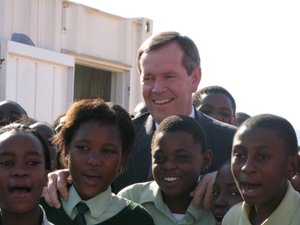
Students enrolled in the Heartbeat after-school support program.
In our country, we recruit foster parents to care for orphans with the hope of finding adoptive families. The massive scale of the problem in South Africa makes that impossible. Heartbeat aggressively seeks out children who have lost both parents and then organizes efforts to fill gaps. They have built a couple of modest buildings next to a school so they can partner in providing additional services to orphaned students. It felt like an extremely active school club for orphaned children. There are counselors, activities and expectations for each child. I sat and talked with several of them. Each was a compelling story.
When we arrived, there was a chorus of teenage orphan children who sang and danced with all the enthusiasm puberty provides. They were having fun. Then some poignant moments: I sat next to a little boy of 9 or 10. He was writing and drawing in a book. I asked to see what he had done. About 3 or 4 pages in, I found, written in his handwriting, a note that started out, “I miss my Mother and little brother.” A few pages later, another mention of his Mother: “I wish she was here so she could help with my homework.” I instantly thought of my own grandfather who lost his Mother at age four to sudden sickness. He told me later in his life, “a day never goes by that I don’t think of my Mother.”
A social worker described the painful process of getting the children to first talk about their loss and then deal with it. The mutual support of the others is critical.
At Heartbeat, there was a group of grandmothers who are caring for children who gather on Mondays to sew and talk. It’s about making clothes for the children, but more about the support they need from each other to keep going.
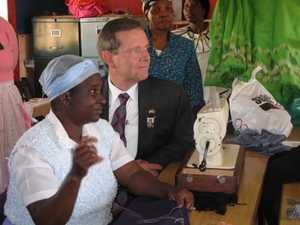
A grandmothers who is learning sewing skills as part of the community support offered by the Heartbeat program.
Among the older children I felt great hope. Resilience had set in and they were looking to the future. One young woman told me, when her Mother died she felt lost. Now, she had found direction. “What do you want to do,” I asked.
“I want to be an auditor,” she replied. A boy about the same age said, he’d decided to study business. The girl next to him will study natural science and wants to be a doctor.
This will be a strong generation or a broken one. I suspect some of both.
In the evening we had a reception at the Ambassador’s home. We’re off to Durban tomorrow morning at six o’clock.

